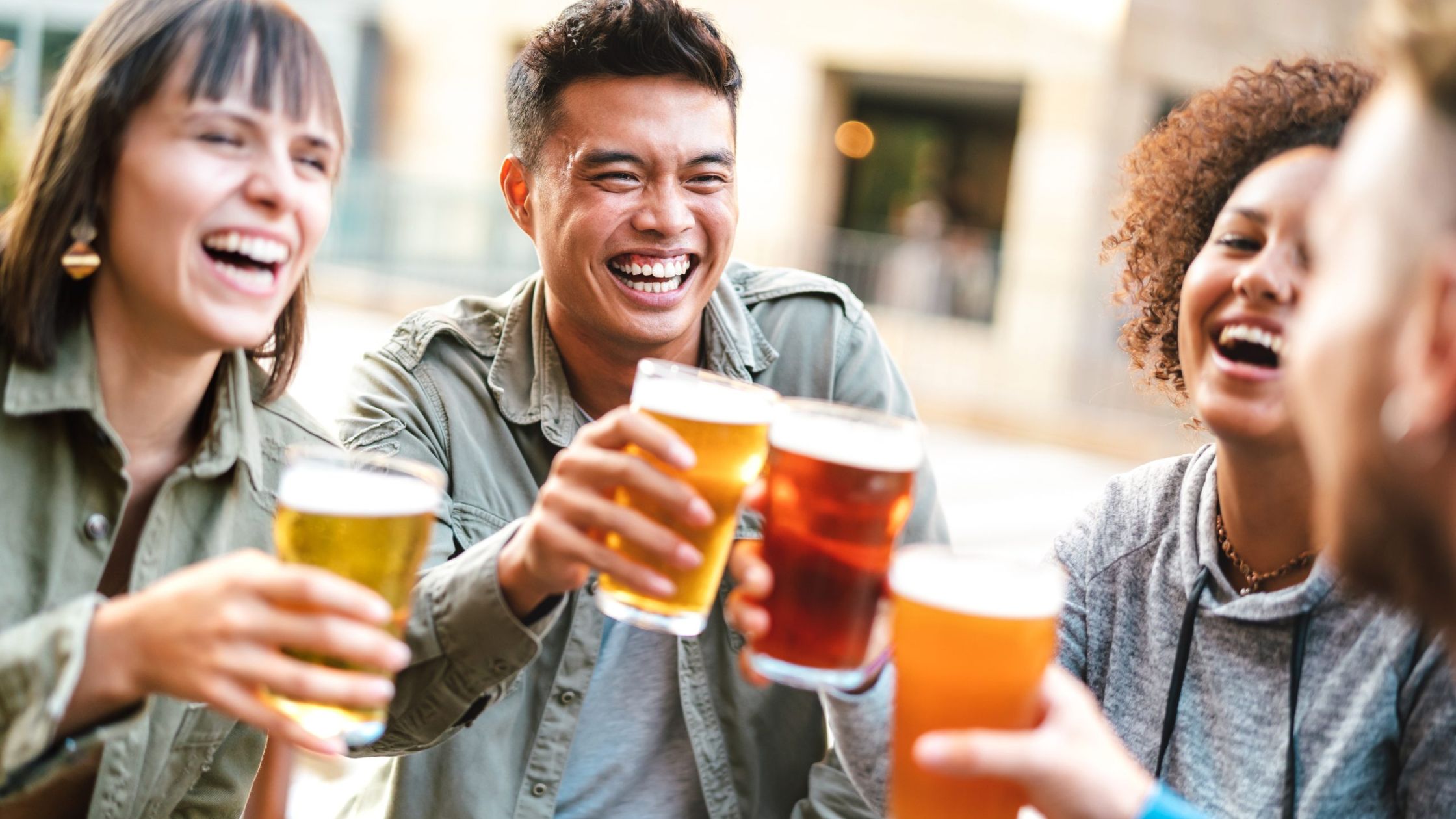Best Liquor Under ₹10,000 for a Perfect New Year 2026 Party
2025-12-05


Beer may be one of the oldest and most highly consumed alcoholic beverages, but Gen Z's approach to beer drinking is far from traditional.
This cohort, born sometime between 1997 and 2012, is actually redefining alcohol consumption. Their tastes are not only based on flavor experiences and wellness considerations, but their social tastes are beyond basic. While many still enjoy a pint that is traditional in style, their preferences are leaning towards light, fruity, and sessionable beers, and they are showing increasing interest in low- and no-alcohol specialty beers.
In this exploration, we will examine the styles of beer Gen Z will be into in 2025, what tastes will vary from previous generations, and what brewers can do to connect with their loyalty.
Unlike Millennials and Gen X, Gen Z did not inherit the same craft beer culture. While earlier generations were responsible for the explosion of pesky hops in craft beer, Gen Z is experiencing a different type of drinking culture of choices, from hard seltzers to ready-to-drink cocktails to alcohol-free selections.
Yet beer still holds its ground. Research shows:
Beer has become one option among many rather than the default alcoholic drink, which means the styles they choose need to stand out.
Read also: The Best Premium and Super-Premium Tequila Brands for Gen Z: A Fresh Guide for 2025
Some beer styles are thriving with this generation, not because they are “traditional,” but because they deliver on taste, health-consciousness, and social appeal.
Hard seltzers have changed the global beer-adjacent marketplace, and they are notably a popular option among many Gen Z drinkers. While they are not technically beer in the traditional, classic sense, hard seltzers are often brewed using malt bases and share the same shelf space.
Why they work for Gen Z:
In India, fruit-flavored malt drinks are catching up fast, with brands experimenting with tropical and local fruit notes. Globally, names like White Claw and Truly still dominate the space.
Light beers, such as Bira 91 Light or Kingfisher Ultra (also Indian!) as well as Bud Light or Corona, have gained a following, in part due to their easy drinking, mild profile. These beers work with Gen Z's lifestyle because:
Gen Z may be less interested in extremely bitter IPAs or heavy stouts, but they are drawn to flavor innovation in the craft beer scene.
Some of their top picks include
The key here is authenticity. Small-batch, locally brewed beers that tell a genuine story about sourcing and production resonate deeply with this audience.
For Gen Z, non-alcoholic beers are no longer a compromise they're lifestyle choices.
Brands such as Heineken 0.0, Bira 91 0.0, and Guinness 0.0 all showcase the flavor and experience of beer without the alcohol content.
Why this trend matters:
Read also: Best 10 Non-Alcoholic Beers for Every Type of Drinker — From IPA to Lager
Some Gen Z drinkers embrace beer hybrids that blend beer-making traditions with other beverage influences. Examples include:
These styles allow breweries to stand out on crowded shelves and cater to adventurous palates.
Gen Z’s beer preferences don’t exist in a vacuum — they’re shaped by broader cultural and lifestyle factors.
Gen Z's choices in alcohol are driven by taste more than price or tradition (60%). This will make them more open to trying beer styles that use fruit, spice, or mild tartness as their base, and less willing to opt for one "signature drink."
Many people in this generation are more aware of calories, sugar, and alcohol by volume than people in previous generations. This has led them to embrace light beers, low-ABV options, and alcohol-free alternatives.
Portable formats like cans and ready-to-drink bottles are favored for social gatherings, outdoor activities, and home entertaining.
The role of Instagram, YouTube, and Reddit in Discovery cannot be overlooked. Beverages with beautiful cans, distinct colors, or cool and unique stories benefit from being shared online and, by extension, being purchased.
Transparency, eco-friendly packaging, and support for local communities give brands a competitive edge.
For breweries looking to attract Gen Z drinkers in 2025 and beyond, the playbook is clear:
| Beer Style / Category | Key Appeal | Example Brands |
| Flavoured Malt Beverages & Hard Seltzers | Light, fruity, portable | White Claw, Truly, Bira Rise |
| Light & Sessionable Beers | Easy-drinking, mild, low-calorie | Kingfisher Ultra, Corona |
| Craft Beers (Hazy IPAs, Sours, Wheat Beers) | Innovative flavours, authenticity | Bira 91 Boom, Sierra Nevada Hazy Little Thing |
| Non-Alcoholic & Low-ABV | Wellness, inclusivity | Heineken 0.0, Guinness 0.0 |
| Hybrid Styles | Novelty, adventurous flavour | Beer-cider blends, fruit lagers |
Gen Z's beer preferences are fluid, the same way the larger food and beverage cultural zeitgeist is fluid. While tonality and awareness are important factors in the shape of products, what is sometimes lost is that Gen Z is clearly drinking less and more specific beer. Instead, there's an emphasis on 'wellness' as well as socializing that encourages inclusivity and responsibility. As such, trajectories for beer category consumption are changing, with low & no-alcohol and flavour-lead beers as the category's strongest trends moving forward.
Another important factor is the local craft movement, which allows the beer industry to connect in an authentic way by sharing stories about their ingredients, sustainability, and cultural relevance. This also is helping local breweries compete against irrelevant mass market brands.
Beer still matters to Gen Z, but the styles that earn their loyalty are different from the styles of previous generations. Whether it's a crisp light lager, a fruity sour ale, or a refreshing non-alcoholic wheat beer, this generation values taste, authenticity, and products that fit their lifestyle.
Breweries that can balance flavor innovation with wellness-focused brews are poised to succeed in the Gen Z era.
Read also: Wheat Beer vs Regular Beer: Taste, Ingredients, Alcohol and More